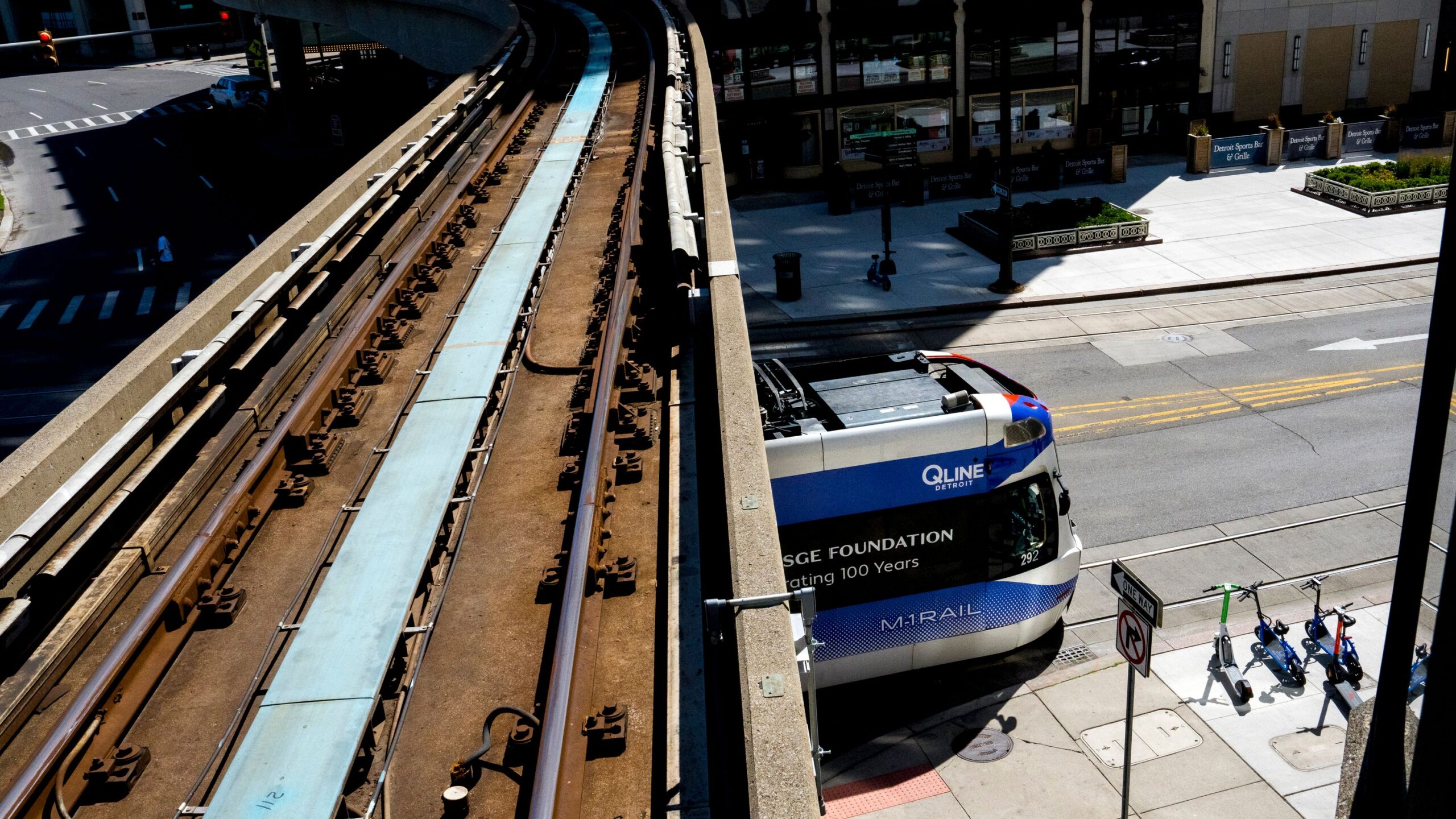
Mass transit has long been a challenge for the state that put the world on wheels, but for the first time in a long time there seems to be political will to change that.
A cohesive regional transit plan is closer to reality in Southeast Michigan after years of division among leaders in Oakland, Macomb and Wayne counties and general complacency from lawmakers.
What’s changed is that leaders are now acknowledging the gravity of the situation. Michigan is losing its young people not just to the coasts, but faster-growing peer states in the Midwest. The availability of mass transit in these regions is often a major differentiation from Michigan, where owning a car is considered essential by many.
“I think this has been something that has held us back as a region and that if we don’t address, is an existential threat,” said Sen. Mallory McMorrow, a Democrat from Royal Oak, who is one of several lawmakers pushing for more transit funding. “We’ve done nothing, and I know that we have left many federal dollars on the table by not showing that we care about or invest in transit as a state.”
The region has come a long way in recent years, though. Residents in Oakland, Wayne and Macomb — now headed by executives who are generally pro-transit — voted in 2022 to fund bus service in each county.
In Oakland, where the old guard stymied efforts to improve transit, an opt-out clause was removed from ballots, putting it on par with Macomb’s millage, which forces communities to get on board and prevents a patchwork of service.
Wayne County is now the outlier, but its top official is aiming to rewrite state law to change that as soon as next year.
Flush with federal pandemic relief cash, the Detroit Department of Transportation and the Suburban Mobility Authority for Regional Transportation have made strides to expand and improve service. If the NFL Draft in April — one of the largest events in recent memory for the region — was a stress test for the transit system, it passed with flying colors, officials said, delivering some 200,000 rides over the three-day event.
The People Mover, now free to ride, is scheduled this fall to replace railcars for the first time since it launched in 1987. The QLine, also fare-free, is coming under new management — and there are early talks of expansion.
At the same time, the region’s transit system faces the same old problems, including funding concerns and basic operational issues. Collective ridership across all transit is also nearly half what it was before the pandemic.
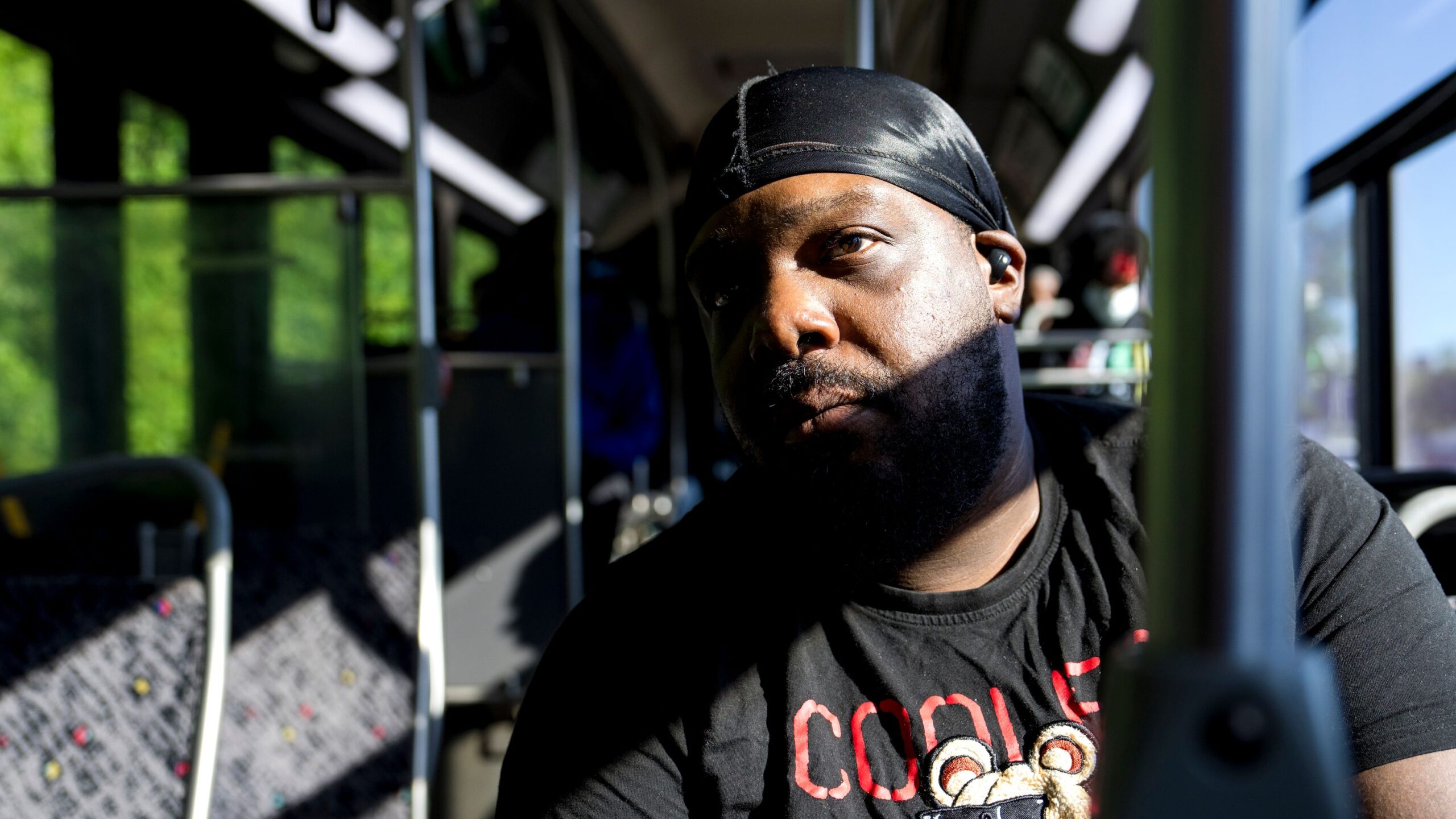
Inside the new $31 million John Hargroves Transit Center at the old state fairgrounds on Eight Mile Road, Antoine Harris’ bus is late. But that’s no worry for the 32-year-old lifelong Detroiter. He factors that into his commute from the west side to downtown, always giving himself at least two hours to get to work.
“It’s 10 out of 10 for importance,” Harris said, waiting for the Route 4 bus to take him down Woodward Avenue. “As far as people who don’t have a car, your only option to get around, especially if you don’t have money for a Lyft or an Uber, is the bus. It comes in handy for the everyday person.”
Harris said the bus service has improved some in recent years, but issues remain. Buses often run late, especially on less busy routes, and he wishes they’d run more frequently in the early morning when he gets off work.
Another gripe is that SMART buses serving the suburbs don’t run late enough. Plenty of times while working in Roseville, Harris found himself stranded after a shift, forced to walk home more than half a dozen miles.
“The only thing I would say they really need to change is their nighttime routine,” he said.
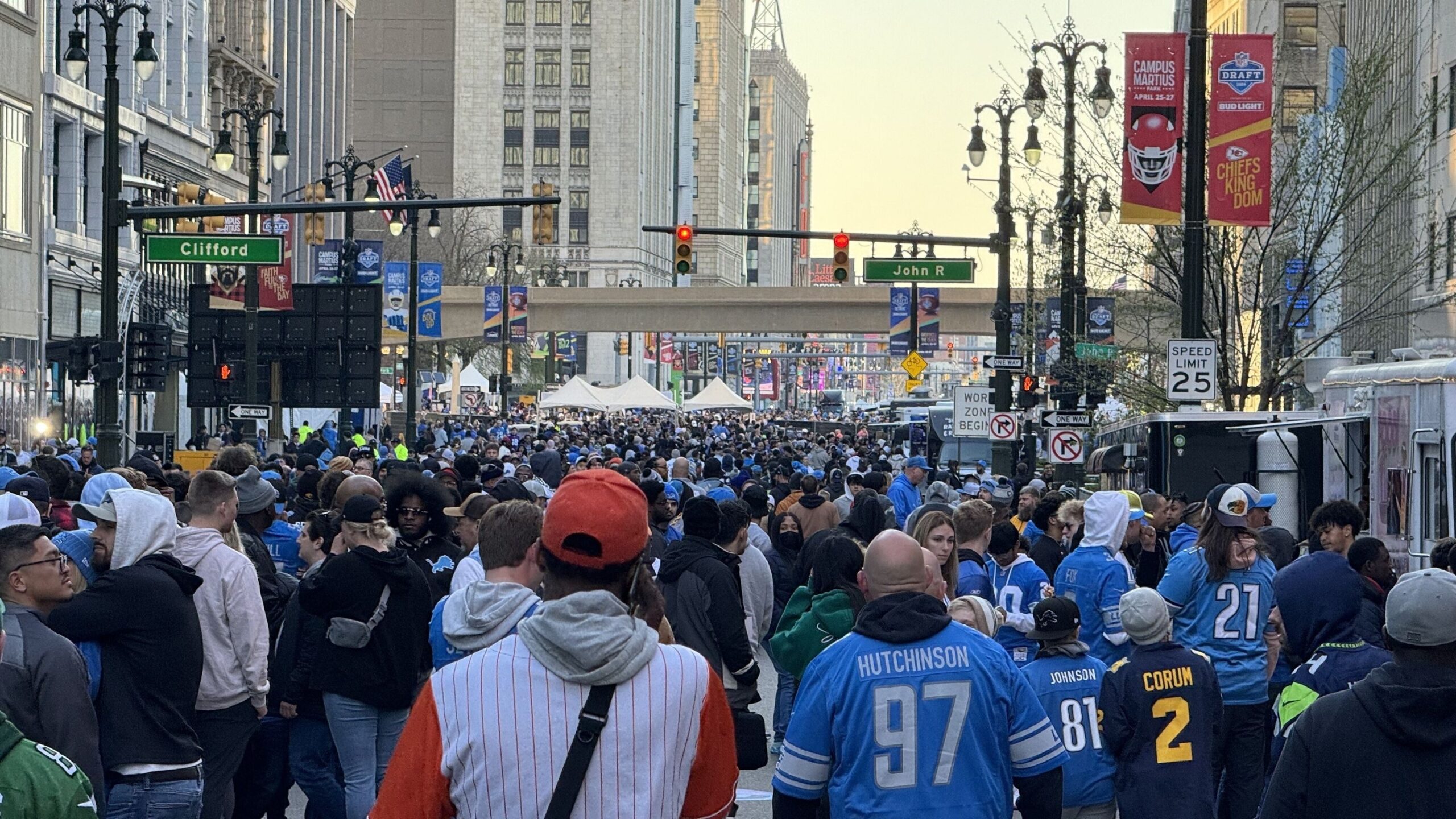
McMorrow, who chairs the state senate’s economic and community development committee, has championed changes to the state’s business attraction SOAR fund, including allocating $200 million annually toward mobility and transit. Proponents of the change argue that attracting and retaining talent by improving community services is a more viable economic development strategy than large corporate subsidies.
That theory will have to wait, though, as the proposed legislation will likely sit until the lame-duck session after the November election.
More transit funding even being in the mix for consideration is reason to celebrate for Ben Stupka, executive director of the Regional Transit Authority of Southeast Michigan, which oversees funding and coordination of transit systems in Oakland, Macomb, Wayne and Washtenaw counties.
“There’s a new transit caucus that just started in 2024,” Stupka said. “I mean, a transit caucus…in the state of Michigan. I think we absolutely have leadership far more aligned than I’ve ever seen on this.”
Optimism for what could come doesn’t mask the challenges of today, though. The state allocated $246 million to the local bus operating budget for fiscal year 2025, down 6% from the prior year when COVID relief funding padded the budget. That will make it more difficult for DDOT and SMART to keep their momentum.
“We’re really back to where we were,” Stupka said. “The costs are going up and up, and the revenues are staying flat.”
Ridership also has not recovered since the pandemic. There were 22.8 million rides taken in 2023, up about 20% year over year but down 44% from 2019. Stupka said he expects that number to keep climbing, and he said the RTA is eyeing 2026 for a potential millage to seek more funding.
“Best thing we can do to have a chance is to continue to put new services on the street and take advantage of the Draft and other events,” he said.
10-year ridership for SMART buses, Ann Arbor’s The Ride, the Qline, the People Mover and Detroit buses.
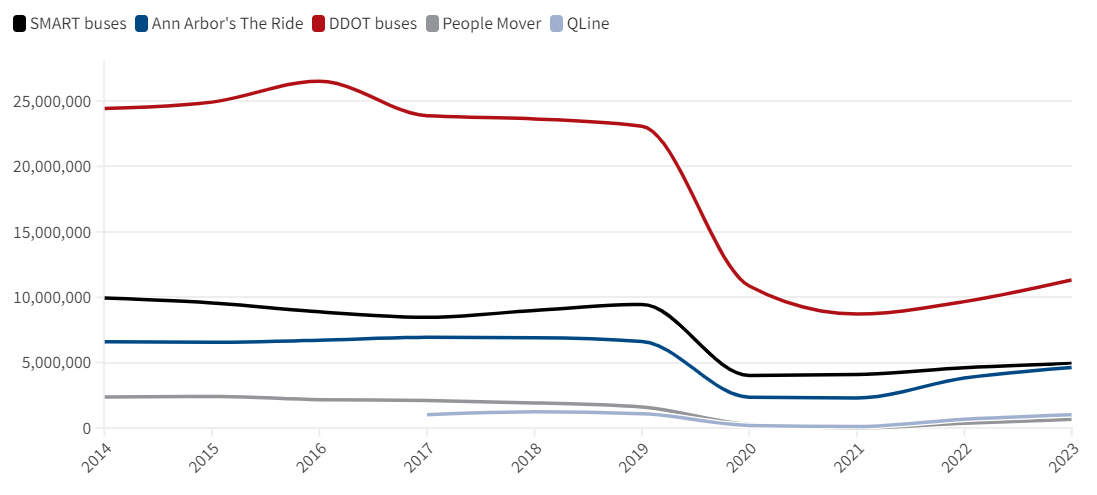
Some of the big improvements this year for each major transit system in Southeast Michigan include:
The opening of the QLine along Woodward Avenue in 2017 marked a pivotal moment for the city, long derided for its lacking mass transit. The 3.3-mile streetcar loop, launched with the help of corporate funding, has been credited with helping activate the Woodward business corridor from downtown through Midtown and into New Center.
It’s also been criticized for its limitations, often viewed as a convenience for city visitors but of little use for Detroiters who need to get around beyond the main commercial corridor. There has been chatter of extending it up Woodward and bringing it to Michigan Avenue and Jefferson.
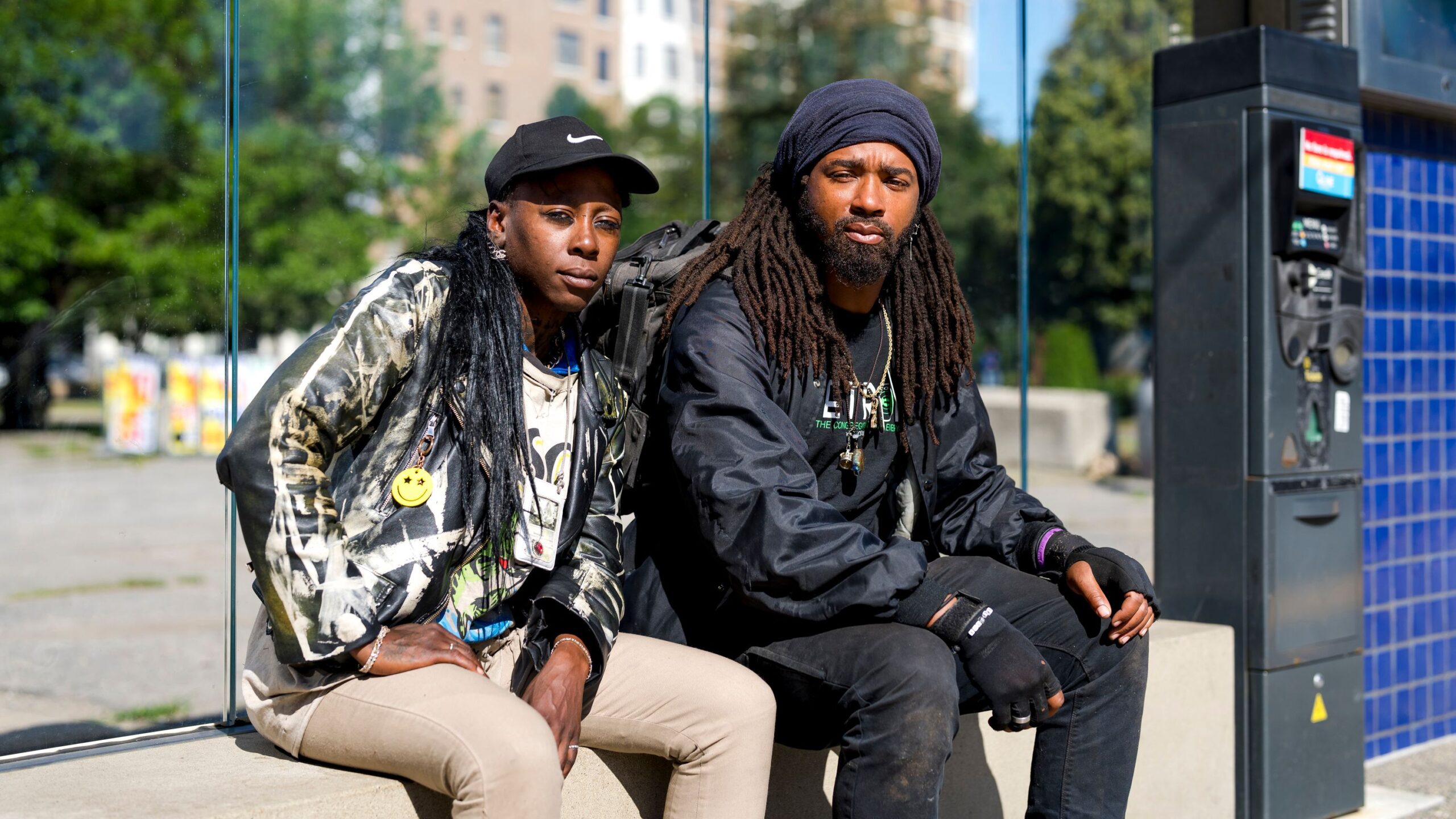
Veronique White, 33, would love to see that become a reality. The QLine has been great for getting around to see some of the best Detroit has to offer, White said recently after exiting the railcar en route to the Detroit Institute of Arts with friend Domonique Simmons, 35.
“The QLine is perfect for that,” she said. “It’s like a little fish. It doesn’t leave the pond. It’s very comfortable.”
Unlike the bus, it’s always on time, Simmons added.
“I would like it if it went farther out,” he said. “It’s almost like a little roller coaster, a sightseeing thing, like how the People Mover is for downtown.”
Robert Cramer, general manager of People Mover operator Detroit Transportation Corp., has been working to shake the perception that the elevated rail system is all novelty and no utility.
“It’s kind of hidden in plain sight,” he said. “If you know, you know, which is really cool, but from a transit provider perspective, it should be painfully apparent how to get into the station and where it’s going to take you.”
The People Mover’s fate depends largely on what happens with the real estate it encircles. For instance, the closure of the Joe Louis Arena and the uncertain future of the Renaissance Center have threatened the rail with obsolescence.
The People Mover gave 655,284 rides last year, down 60% from 2019. Free fare does seem to be boosting ridership, as the railcars have tallied nearly 700,000 rides already this year.
“The People Mover was originally designed to be a connector loop for more intense mass transit,” Cramer said. “I think that along the way, the People Mover can provide a lot of connectivity and value to improving transit across the region.”
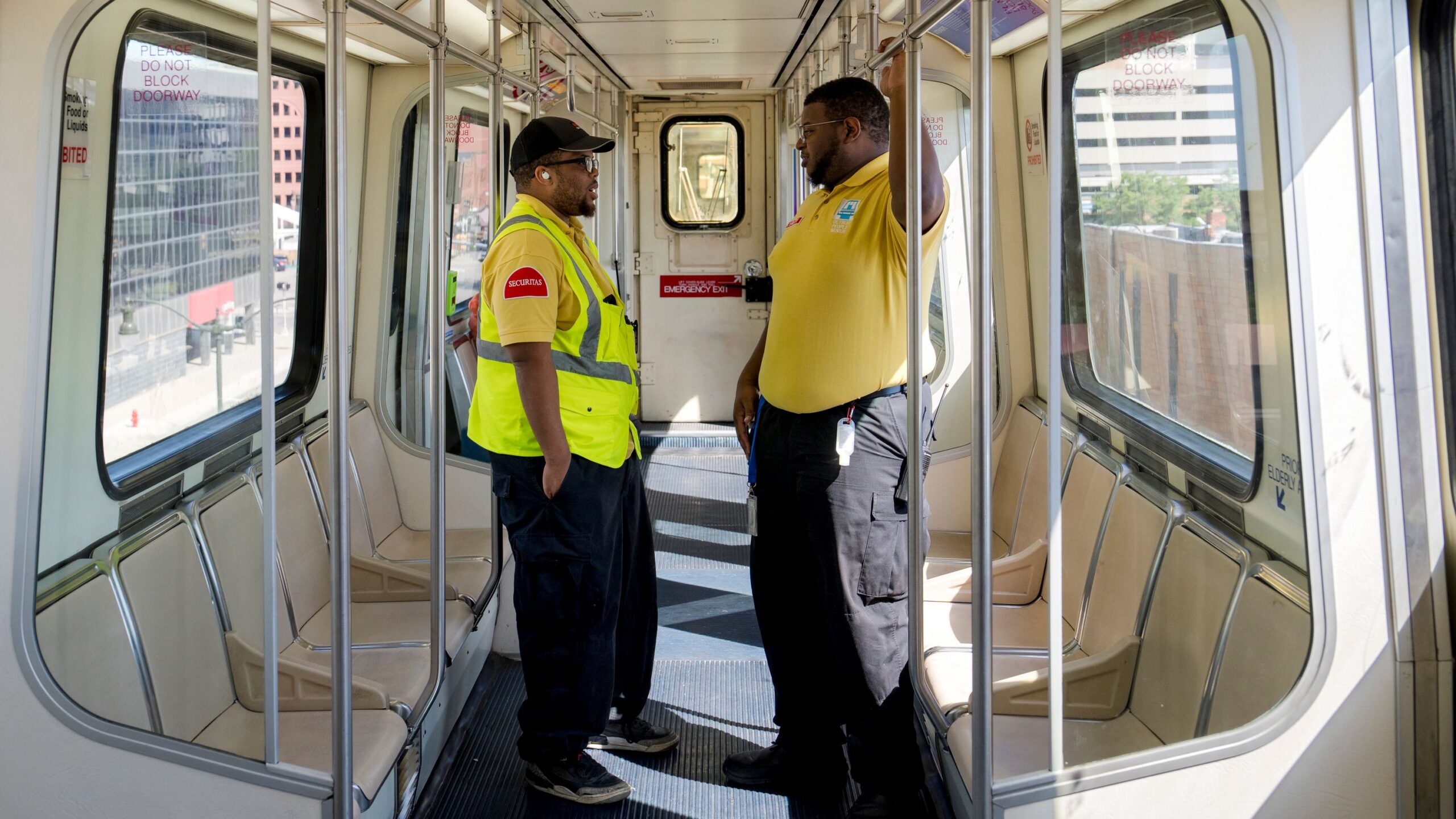
The work-from-home era has hurt weekday ridership as downtown overall is less busy with office workers. What the People Mover has lost in that regard, though, it is making up with first-time riders, said People Mover security guard Adam Rucker aboard an all-but-empty train car on a recent Monday morning.
“It’s become more of a tourist attraction now,” Rucker said. “Since this is free and the QLine is free, a lot more people are starting to show up so they can see what’s going on in the city.”
New development also presents opportunity. A new hotel and apartments are being erected in place of the former hockey stadium, and a Dan Gilbert-backed plan to revitalize the RenCen promises more traffic to the site in the future.
That could bring new purpose for the People Mover, which is scheduled to undergo one of the most significant renovations in its history. It is acquiring replacement railcars from the city of Toronto, which recently upgraded railcars identical to the People Mover right before a decision to retire the system.
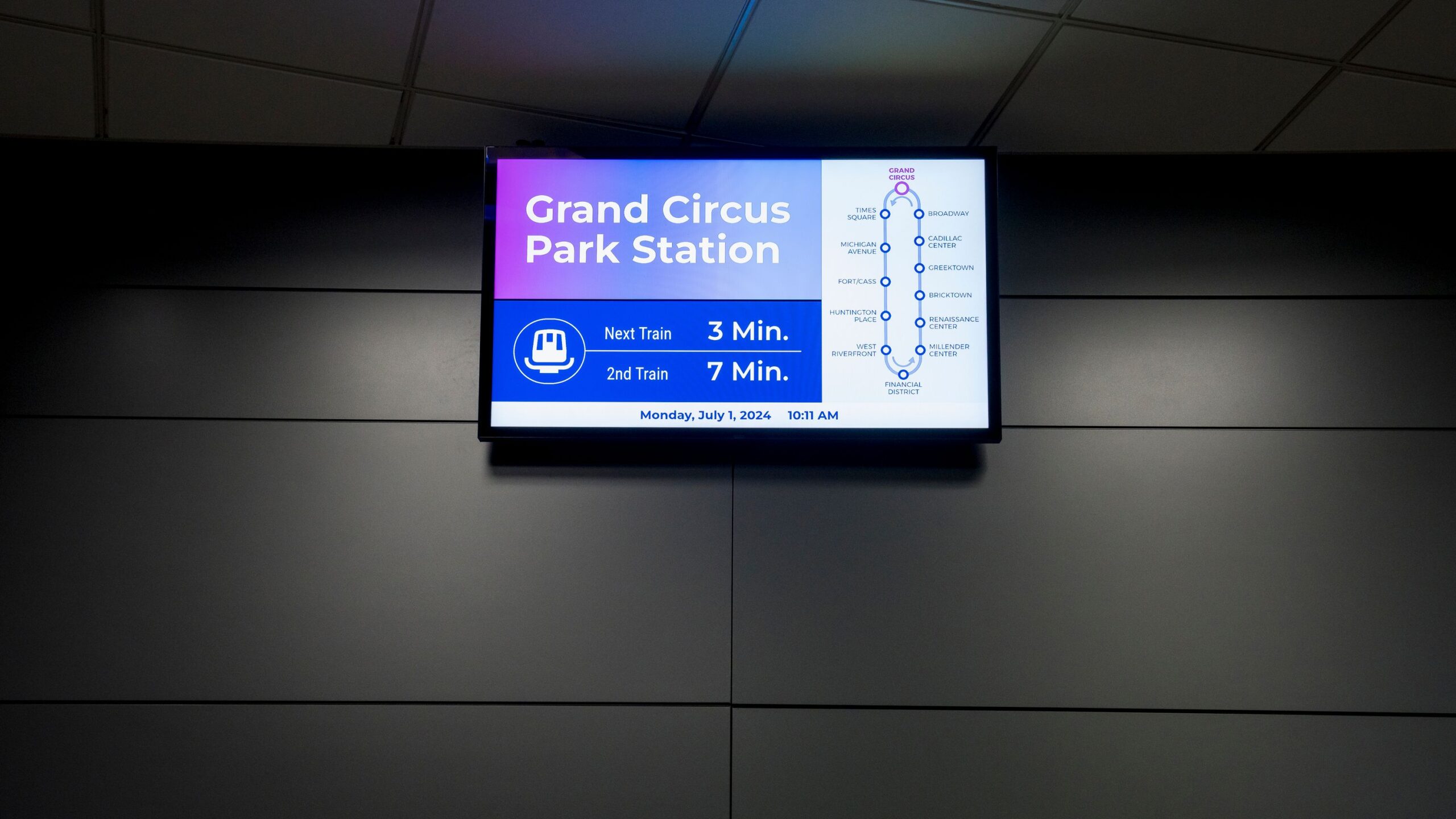
Detroit is buying a dozen of the unique 40-foot railcars, plus specialized equipment and spare parts, for $6 million — a steal, considering their value to the city, Cramer said.
That, combined with recently installed kiosks, new next-train arrival screens and an improved public address system, will buy the People Mover some time until longer-term decisions are made. The city nabbed an $800,000 state grant that will be used to study how the People Mover could be physically changed, e.g. new stations or an expanded track, which Mayor Mike Duggan has supported.
The effort is reflective of a broader push to improve transit across the region, Cramer added.
“All of the providers have been trying different techniques to really improve the connectivity and access to the system,” he said.
Crain’s Forum provides in-depth reporting and offers perspectives on solutions into issues facing metro Detroit and Michigan.
Owning a home is a keystone of wealth… both financial affluence and emotional security.
Suze Orman